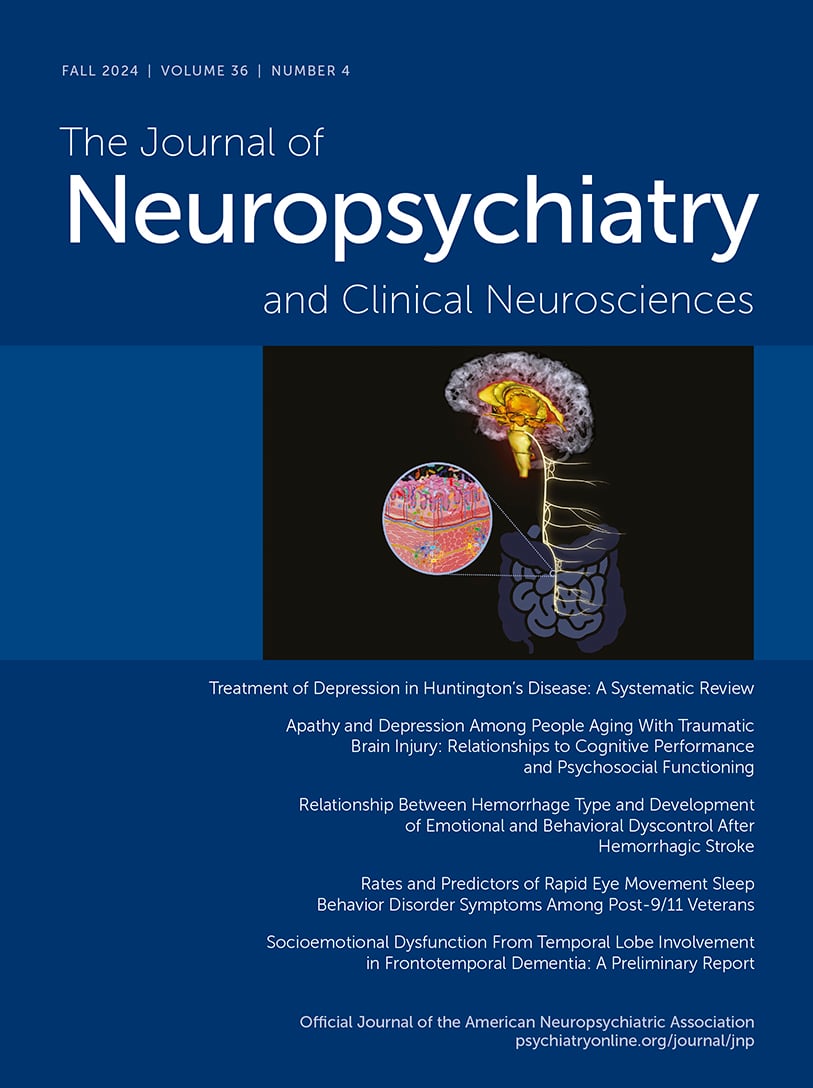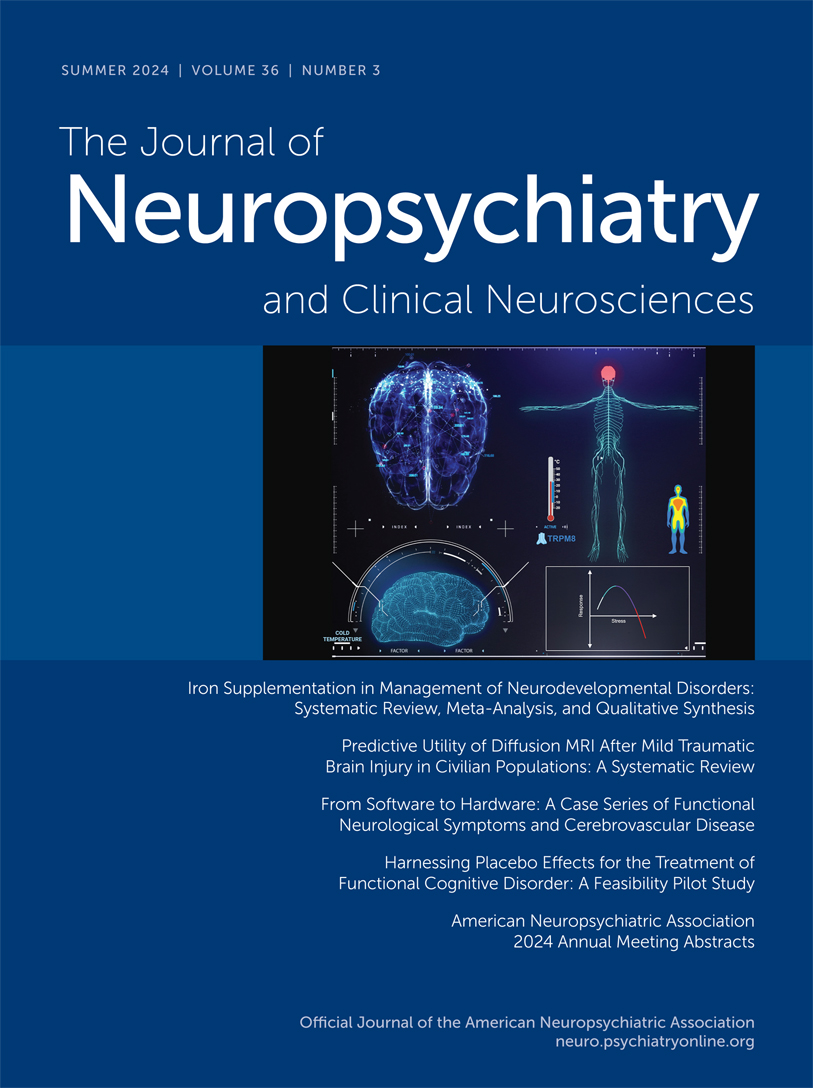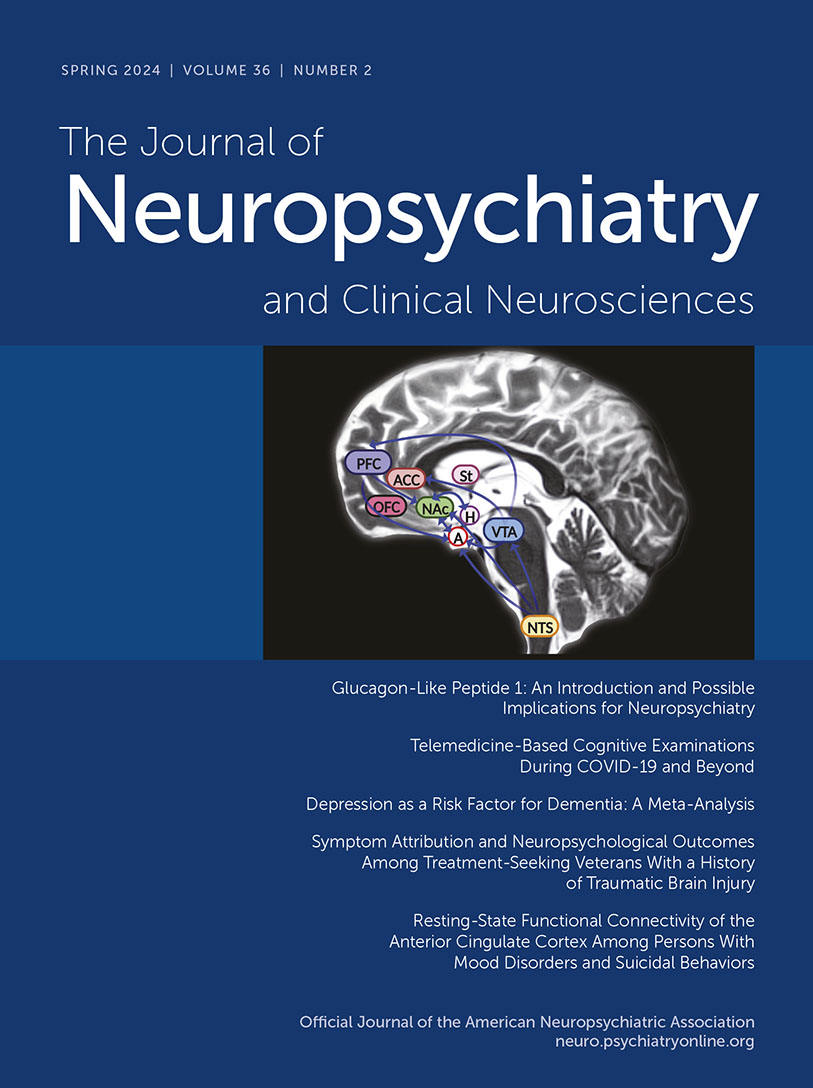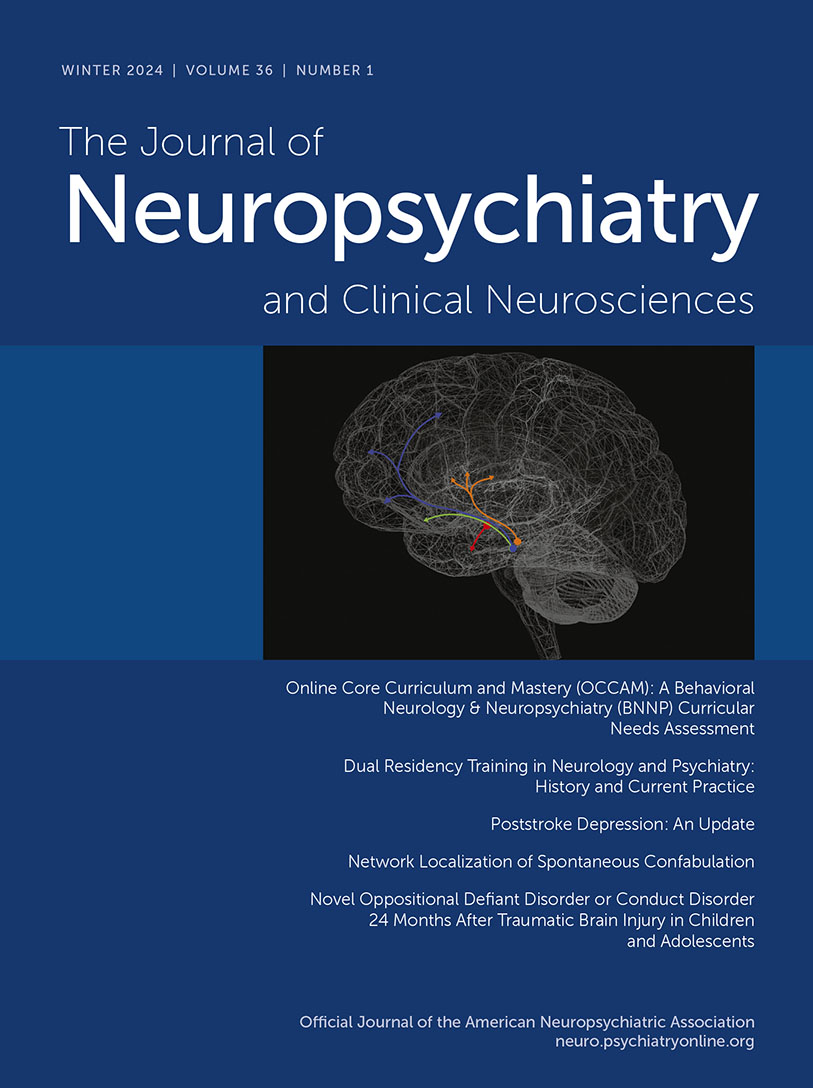The Journal of Neuropsychiatry and Clinical Neurosciences
- Volume 31
- Number 1
- January 2019
Windows to the Brain
Special Articles
Publication date: 31 October 2018
Pages6–16Klüver-Bucy syndrome (KBS) is a rare clinical presentation following traumatic brain injury (TBI). Symptoms include visual agnosia, placidity, hyperorality, sexual hyperactivity, changes in dietary behavior, and hypermetamorphosis. The purpose of this ...
https://doi.org/10.1176/appi.neuropsych.18050112Regular Articles
Publication date: 06 September 2018
Pages17–24A positive relationship between sport-related concussion (SRC) history and depressive symptoms in retired National Football League (NFL) athletes has been observed, with self-rated physical functioning identified as a confounding factor. The authors ...
https://doi.org/10.1176/appi.neuropsych.18040080Publication date: 11 October 2018
Pages25–36Failure to recover from proactive semantic interference (frPSI) has been shown to be more sensitive than traditional cognitive measures in different populations with preclinical Alzheimer’s disease. The authors sought to characterize the structural and ...
https://doi.org/10.1176/appi.neuropsych.17120355Publication date: 06 September 2018
Pages37–42Depression and anxiety are common among persons with multiple sclerosis (MS), and both negatively affect functional status. However, studies rarely account for overlap in depressive and anxiety symptoms on functional outcomes among people with MS. The ...
https://doi.org/10.1176/appi.neuropsych.18010011Publication date: 11 October 2018
Pages43–48The purpose of this article was to explore sex- and race-specific variables and comorbidities associated with transient global amnesia (TGA) using a nationally representative database. Data were obtained from the Nationwide Inpatient Sample using ICD-9 ...
https://doi.org/10.1176/appi.neuropsych.17120353Publication date: 04 October 2018
Pages49–56The habenula is a small midbrain structure that is important for brain signaling and learning from negative events. Thus, the habenula is strongly connected to both the reward system and motor regions. Increasing evidence suggests a role for the habenula ...
https://doi.org/10.1176/appi.neuropsych.17120351Publication date: 11 October 2018
Pages57–64The diagnostic category of “organic disorders” was officially removed from the psychiatric nosology in DSM-IV, published in 1994. Despite this change, physicians continue to use the term “organic causes” to refer to medical and neurological causes of ...
https://doi.org/10.1176/appi.neuropsych.18050099Clinical and Research Reports
Publication date: 31 October 2018
Pages65–69Insecure attachment is a predisposing risk factor for the development of functional neurological disorder (FND). There is limited research investigating connections between attachment styles, other predisposing vulnerabilities, and symptom severity in ...
https://doi.org/10.1176/appi.neuropsych.18040095Publication date: 31 October 2018
Pages70–79In its early stages, anti-N-methyl-d-aspartate receptor (NMDAR) encephalitis is often characterized by prominent psychiatric manifestations that can lead to delays in diagnosis and treatment. The authors aimed to address this problem by providing a ...
https://doi.org/10.1176/appi.neuropsych.17120343Anxiety Independently Contributes to Severity of Freezing of Gait in People With Parkinson’s Disease
Publication date: 06 September 2018
Pages80–85Freezing of gait is a disabling feature of Parkinson’s disease, and it has been shown that nonmotor symptoms, such as anxiety and cognitive impairment, may be involved in the pathophysiology of the phenomenon. However, the association between freezing of ...
https://doi.org/10.1176/appi.neuropsych.17090177Case Reports
Book Review
Past Issues
View Issues Archive
Vol. 36 | No. 4

Vol. 36 | No. 3

Vol. 36 | No. 2
